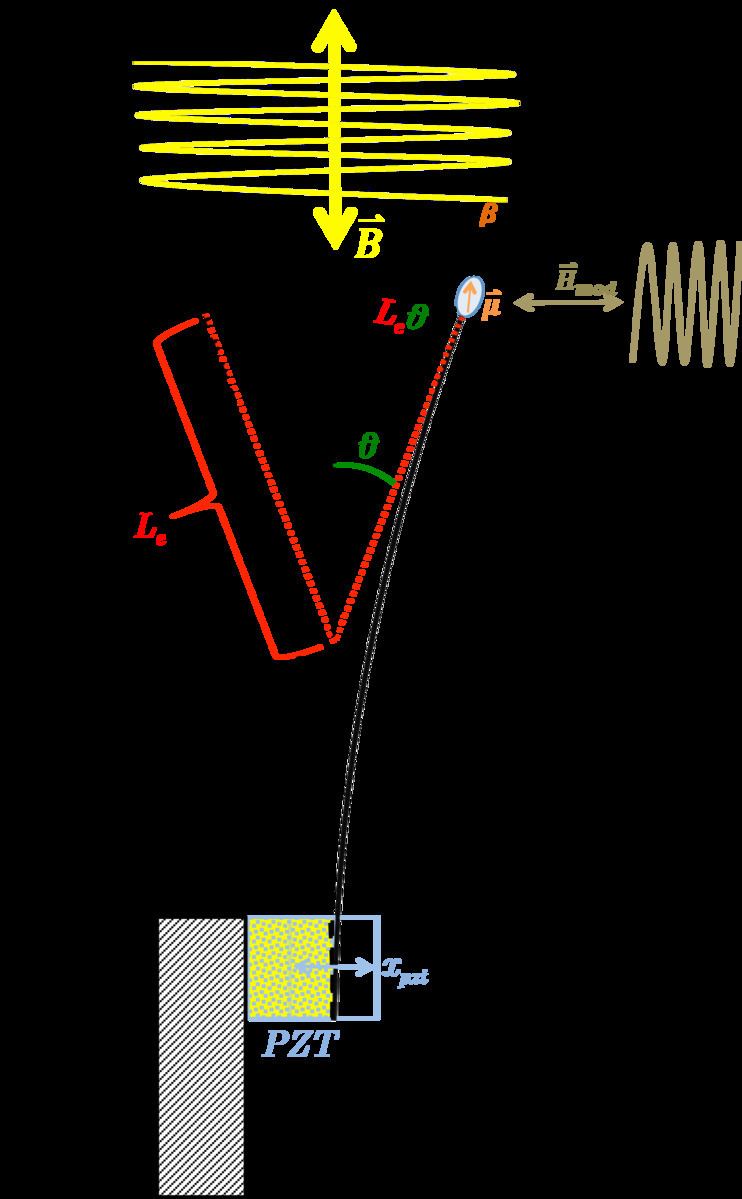 | ||
Cantilever magnetometry is the use of a cantilever to measure the magnetic moment of magnetic particles. On the end of cantilever is attached a small piece of magnetic material, which interacts with external magnetic fields and exherts torque on the cantilever. These torques cause the cantilever to oscillate faster or slower, depending on the orientation of the particle's moment with respect to the external field, and the magnitude of the moment. The magnitude of the moment and magnetic anisotropy of the material can be deduced by measuring the cantilever's oscillation frequency versus external field.
A useful, although limited analogy is that of a pendulum: on earth it oscillates with one frequency, while the same pendulum on, say, the moon, would oscillate with a slower frequency. This is because the mass on the end of the pendulum interacts with the external gravitational field, much as a magnetic moment interacts with an external magnetic field.
which is the form as seen in literature, for example equation 2 in the paper "Magnetic Dissipation and Fluctuations in Individual Nanomagnets Measured by Ultrasensitive Cantilever Magnetometry"
Cantilever Equation of Motion
As the cantilever oscillates back and forth it arches into hyperbolic curves with the salient feature that a tangent to the end of the cantilever always intersects one point along the middle axis. From this we define the effective length of the cantilever,
where
where we have defined
We can plug Eq. 2 into our Lagrangian, which then becomes a function of
or
where
We can use the binomial expansion to rewrite
which is the form as seen in literature, for example equation 2 in the paper "Magnetic Dissipation and Fluctuations in Individual Nanomagnets Measured by Ultrasensitive Cantilever Magnetometry"
